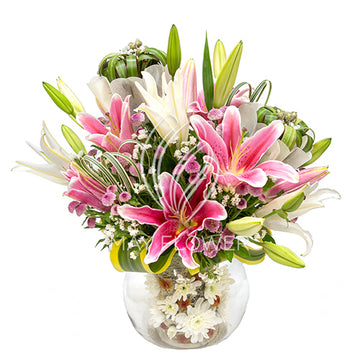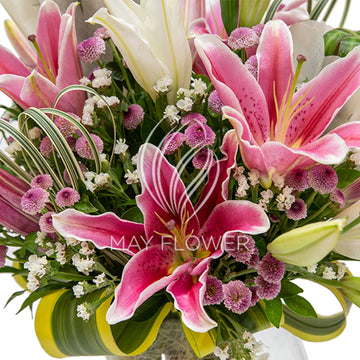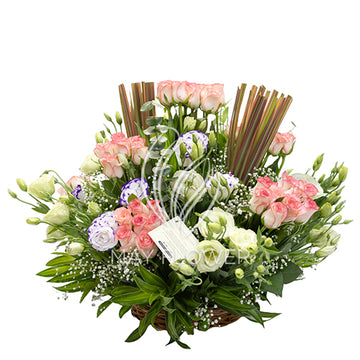Corpse Flower - The Monster Flower
One of the world’s largest and rarest flowering structures, the corpse flower is a pungent plant that blooms rarely and only for a short time. While it is in bloom, the flower emits a strong odor similar to rotting meat or, aptly, a decaying corpse.
The corpse flower is endemic to western Sumatra where it grows in rainforests on limestone hills. For those who didn’t memorize the globe during their geography class, Sumatra is an island in southeast Asia in western Indonesia. It’s near Borneo and New Guinea. Sumatra has a wide range of plant and animal species but has lost almost half of its tropical rainforest in the last 35 years. Many scientists blame Singapore and Malaysia for their pollution. It’s also part of the same flower family as the calla lily.
The fragrance of the corpse flower resembles rotting meat, which attracts carrion-eating beetles and flesh flies that pollinate the flower. The red color and texture contribute to the illusion that the corpse flower is a piece of meat. The stench has been described as spoiled eggs, a soiled diaper, rotting fish, dirty laundry or even day-old roadkill – for those who disturbingly know what that smells like
There is a good reason for the plant’s strong odor. The smell, color and even temperature of corpse flowers are meant to attract pollinators and help ensure the continuation of the species.
Dung beetles, flesh flies and other carnivorous insects are the primary pollinators of this type of flower. These insects typically eat dead flesh. The smell and the dark burgundy color of the corpse flower are meant to imitate a dead animal to attract these insects.Corpse flowers are also able to warm up to 98 degrees Fahrenheit (36.7 Celsius) to further fool the insects
The corpse flower’s inflorescence (otherwise known as a cluster of flowers arranged on a stem) can reach more than 10 feet in height. The leaf grows on a somewhat green stalk that branches into three sections at the top, each containing many leaflets. The leaf structure can reach up to 20 feet tall and 16 feet across. Each year, the old leaf dies and a new one grows in its place. When the corm (otherwise known as a plant stem) has stored enough energy, it becomes dormant for about four months. Then, the process repeats. The corm typically weighs around 110 pounds. The heaviest corm ever recorded was in 2006 in the Botanical Garden of Bonn, Germany where it weighed 258 pounds.
The scientific name of the corpse flower is Amorphophallus titanum. According to Gustavus Adolphus College, the name is from the Latin words amorphos (without form, misshapen), phallos (penis) and titanum (giant).
In cultivation, the corpse flower generally requires between seven and 10 years of vegetative growth before blooming for the first time. After its initial blooming, there can be considerable variation in blooming frequency. Some plants may not bloom again for another seven to 10 years while others may bloom every two to three years. There have also been documented cases of back-to-back blooms occurring within a year. The bloom typically opens between mid-afternoon and late evening and remains open all night. Most corpse flowers begin to wilt within 12 hours, but some have been known to remain open for 24 to 48 hours.
The corpse flower was first discovered in Sumatra in 1878 by Italian botanist Odoardo Beccari, according to the UC Botanical Garden. The plant grows in the wild only in tropical regions of Asia. Though the corpse plant isn’t endangered, it is becoming increasingly rare in its native home as a result of deforestation, pollution, farming and other factors.
The corpse flower is considered “vulnerable” when it comes to its conservation status. A vulnerable species is considered as such because it’s likely to become endangered unless the circumstances threatening its survival and reproduction improve. Vulnerability is mainly caused by habitat loss or destruction. There are currently 4,914 plants classified as vulnerable, compared to 2,815 in 1998.
Corpse flowers are pretty rare in the world of Botanic Gardens. Kew Gardens in London has two of them. The Franklin Park Zoo in Boston, Mass. has one named Morticia. The Royal Botanic Gardens in Melbourne, Victoria, Australia has a corpse flower that last bloomed in December 2012. The Huntington Library in San Marino, Calif. also has a corpse flower. There’s one named Putrella at the Muttart Conservatory in Edmonton, Canada. And obviously, there is one at the Denver Botanic Garden, hence the purpose of this listicle. There are about 100 recorded cultivated corpse flowers around the world. The first recorded flowering in the United States was at the New York Botanical Gardens in 1937.

























